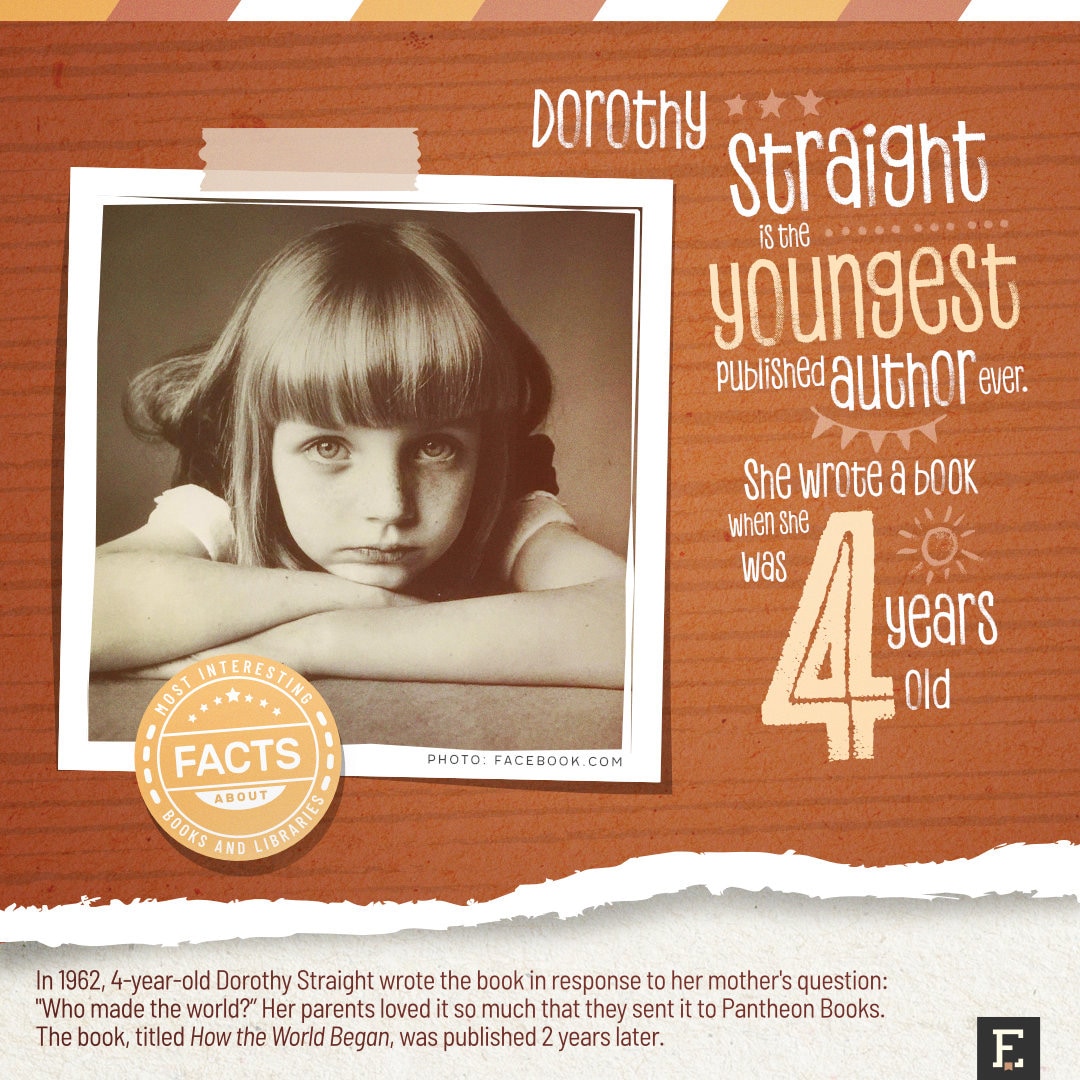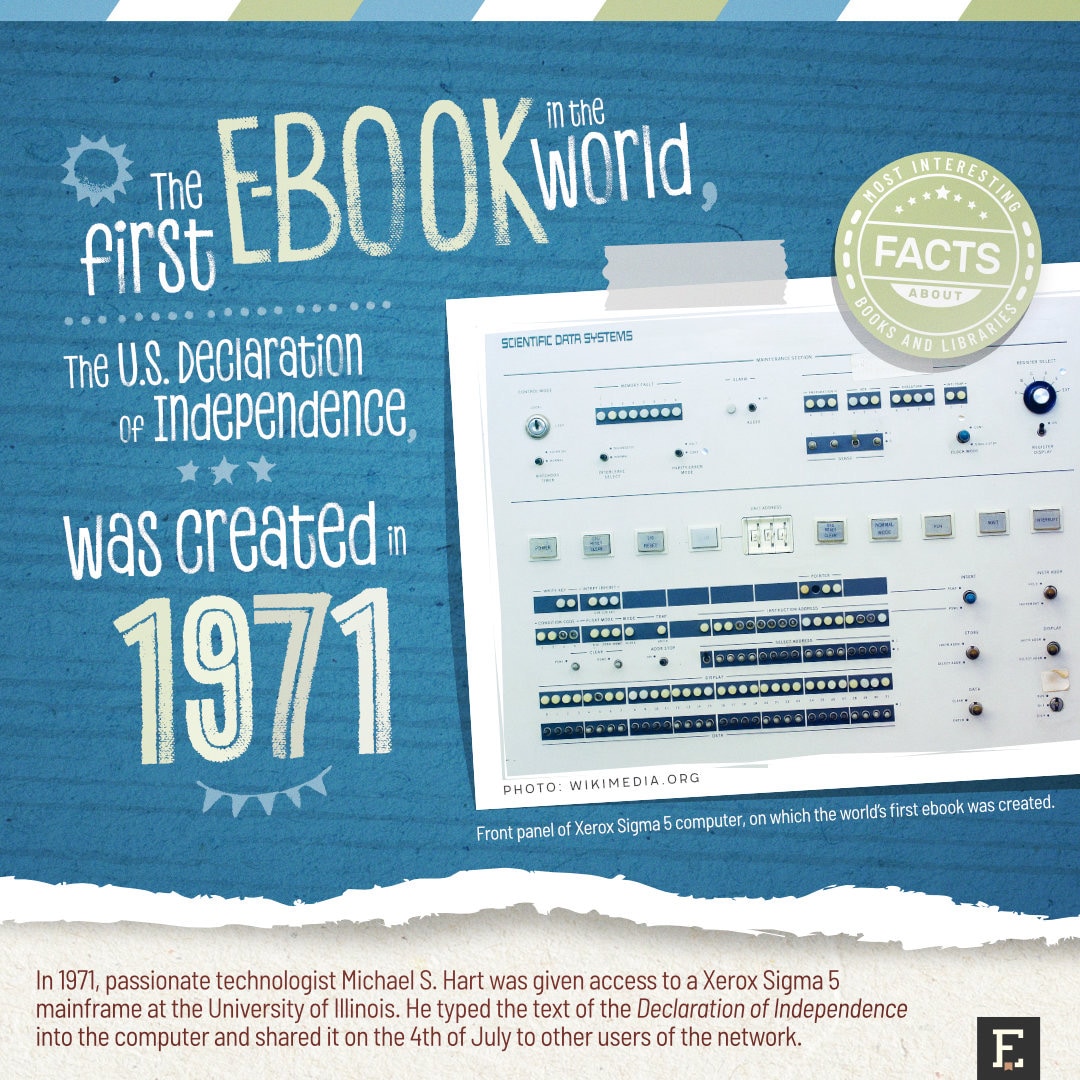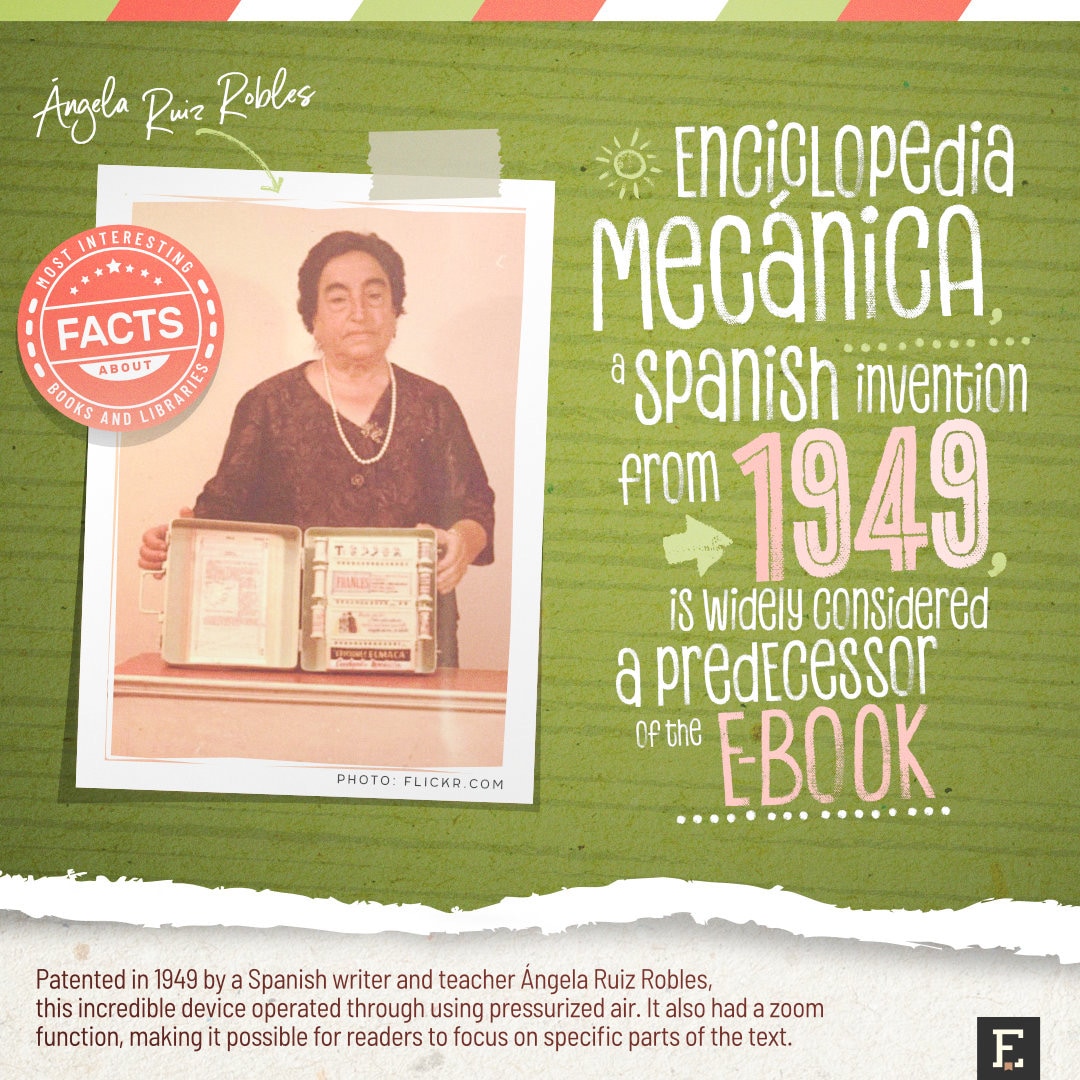Which president read at least one book per day? How old is the oldest library in the world? Which country reads the most? These and many other fun facts are guaranteed to surprise you.
From news articles to Instagram captions, work emails to text messages – we flip through tons of bite-size chunks of writing in our daily lives without even realizing it.
Chances are that by now, you’ve already skimmed through your co-worker’s excruciatingly long email or quickly scrolled through a fun fact list like this one, followed a ten-tweet-long juicy Twitter feud between your friends or caught up on all the new breaking news – but have you read something today?
Not skimmed through, scrolled through, or swiped through something – but actually committed to reading a book?
The “no-strings-attached” reading approach is slowly starting to dominate our daily lives, and we find ourselves having less and less time to commit to a weighty novel – and would rather spend that time skimming through quick reads that do not require much focus or care.
Reading has so much to offer – and if we’re looking for a casual, easily-digestible read, we always have short stories – and the world of books is much more fascinating than you think.
In this list, you’ll find lots of fun facts that are guaranteed to make you re-appreciate books all over again. Some of them are illustrated to make it even easier for you to share with friends and promote reading.

50 surprising fun facts about books, libraries, and reading
1

The first-ever “Harry Potter” was a short story published in communist Poland in 1972.
The boy who lived has, in fact, lived ever since 19 March 1972, when literary magazine Życie Literackie published a short story titled “Harry Potter”. The author – Jan Rostworowski – was a Polish writer and poet who, as a soldier of the Polish Army, spent twenty-eight years in Great Britain.
Rostworowski’s text tells a story of a seventeen-year-old Harry whose life is much more muggle-like than that of his namesake. In fact, his life is rather ordinary – as a shopkeeper, he delivers the original Cracovian sausage and pickles. And in the end – he suddenly vanishes. ⇢ More info. ⇢ Photo credit.
2
In the Harvard Library, there are three books suspected to be bound in human skin.
One of Harvard Library’s books, Des destinées de l’ame, is 99.9% certain to have been bound in human skin. It has been sitting in Harvard’s Houghton Library since the 1930s.
The practice of binding books in human skin was not at all uncommon in the 15th century, and was done to commemorate the dead, among other reasons. ⇢ More info.
3
According to the Guinness World Records, the largest book in the world weighs over 3,000 lb and measures 16.40 ft x 26.44 ft.
Unveiled by Mshahed International Group in Dubai, UAE on 27 February 2012, the largest non-published book to date is titled This the Prophet Mohamed and is a compilation of stories highlighting the lifetime achievements of Islam’s Prophet. Over 50 people took part in the construction of the text. ⇢ More info.
4

The largest book ever published – “The Little Prince” – is almost 7 feet high and 10 feet wide.
The record is held by an edition of “The Little Prince” by a Brazilian publishing company Ediouro Publicações. First presented at the XIII Biannual Book Fair of Rio de Janeiro on 13 September 2007, “The Little Prince” measures 2.01 m (6.6 ft) high and 3.08 m (10.1 ft) wide and contains 128 pages. ⇢ More info. ⇢ Photo credit.
5
The first bookmobile in the world was launched in 1857. It was a horse-drawn wagon created to “diffuse good literature among the rural population.”
Launched by philanthropist George Moore, the first-ever bookmobile started operating in Great Britain in the 19th century. The horse-drawn wagon served books from bookshelves mounted on the outside and traveled between eight villages in the Cumbria County, in North West England. ⇢ More info.
6
The longest-ever book title consists of over 3,700 words.
Written by Vityala Yethindra and released on 20 March 2019, the title of The Historical Development of the Heart… is made up of a whopping 26,000 characters.
It is so long mainly because the author decided to enlist all the different species the book mentions, as well as ask over 50 different questions the book provides answers to, and include both in the title. ⇢ More info.
7

This monastery in Egypt is home to the oldest continually operating library in the world, established in AD 565.
The library at Saint Catherine’s Monastery at the foot of Mount Sinai is the oldest currently operating in the world, and has the second largest collection of ancient manuscripts and codices, just after Vatican City.
It houses several unique texts, including the Syriac Sinaiticus and, until 1859, the Codex Sinaiticus, the oldest known complete Bible dating back to around 345 CE. ⇢ More info. ⇢ Photo credit.
8
Warsaw is the city with the biggest number of libraries per capita – with a whopping 11.5 libraries per 100,000 citizens.
Poland’s capital Warsaw is the ultimate heaven for book lovers. Seoul and Brussels follow close behind, with 11 and 10 libraries per 100,000 inhabitants on average, accordingly. The city that loaned the most books on average was Tokyo, with 111.9 million book loans in just one year. ⇢ More info.
9
The word library comes from Latin liber – the inner bark of trees – and was first used in written form in the 14th century.
In Old English – the earliest historical form of the English language, spoken in the early Middle Ages – “book hoards” (from Old English bōchord) were what we know as libraries or collections of books today. ⇢ More info.
10
The world’s largest fine for an overdue library book stands at $345.14, the amount owed at two cents a day.
Poetry book Days and Deeds was checked out of Kewanee Public Library in April 1955 by Emily Canellos-Simms to be returned on 19 April. Having found the book at her mother’s house 47 years later, Emily gave the book back, with an overdue fine of over $345. ⇢ More info.
11

Portuguese Library Biblioteca Joanina is home to a swarm of bats that feed on book-eating insects every night.
Biblioteca Joanina has a rather unlikely cleaning crew – in this grand old Portuguese library, bats act as pest control. Swarms of bats hide behind the rococo bookcases during the day, while at night they feast on book-damaging insects, helping preserve the over 300-year-old building and its rich cultural heritage.
Human bookworms are safe, though. ⇢ More info. ⇢ Photo credit.
12
Morioka Shoten Ginza, a unique bookstore in Tokyo, offers only one book every week and organizes events to discuss it every evening.
The concept of a “single room with a single book” was invented by Yoshiyuki Morioka to increase focus on a single book. Through that, Morioka argues, a reader’s relationship with a book would become much more personal and because of that their pleasure of reading would also be elevated.
For six continuous days, Morioka’s bookstore offers one title and encourages buyers to attend group discussions to connect the author with its readers. ⇢ More info.
13
Portuguese bookshop Bertrand Chiado is officially the oldest operating bookshop in the world, founded in 1732.
Today, Bertrand has developed into a network of 52 shops scattered across Portugal and has been frequented by numerous famous authors, including Alexandre Herculano, Fernando Pessoa, Eca de Queiros, and Aquilino Ribeiro. The latter was such a frequent visitor that a special room was dedicated to the writer and called “Corner of Aquilino”. ⇢ More info.
14
The longest novel ever written is À la recherche du temps perdu by Marcel Proust, first published in 1912. It has an estimated 1,267,069 words.
Also known as Remembrance of Things Past or In Search of Lost Time, the 13-volume-long masterpiece was published in 20th-century France. It is roughly 4,215 pages long and is comprised of an estimated 9,609,000 characters including spaces. An average reader who reads at 300 words per minute would have to spend at least 70 hours to finish this great novel. ⇢ More info.
15

Dorothy Straight wrote her book How the World Began when she was 4 years and 3 months old, making her the youngest person in the world to write a published book.
Dorothy wrote the book all in one evening in response to her mother’s question of “Who made the world?”, and her parents loved it so much that they sent it to Pantheon Books. It was published 2 years later. ⇢ More info. ⇢ Photo credit.
16
Written in AD 123, Chariton’s Chaereas & Callirhoe is the oldest existing novel in the world.
This ancient Greek prose romance narrates the adventures of a just-married couple, overwhelmingly beautiful Callirhoe and handsome Chaereas, whose relationship is put to a test when Callirhoe’s former suitors plot a scheme to rip the lovers apart. ⇢ More info.
17
James Patterson, the author of Alex Cross and Women’s Murder Club series, was the first-ever writer to exceed one million sales in ebooks.
James Patterson achieved the one million mark in July 2010. Later that month, Amazon announced that Patterson’s competitor – Stieg Larsson – has also sold over one million digital copies in his Millennium trilogy, making him the first one to sell more than 1 million paid Kindle books and enter Amazon’s exclusive Kindle Million Club. ⇢ More info.
18
The first generation Kindle, released on 19 November 2007, was sold out in only 5 1/2 hours.
The first-ever Kindle cost $399, and after it was sold out it remained out of stock for five months until late April 2008. With its 250 MB of internal storage, it could hold approximately two hundred non-illustrated titles at a time. It also had a speaker and a headphone jack for listening to audio files. ⇢ More info.
19

The first ebook in the world is The Declaration of Independence, released in 1971.
In 1971, passionate technologist and futurist Michael Stern Hart was given access to a Xerox Sigma V mainframe at the University of Illinois. Inspired by a free printed copy of the Declaration of Independence, he decided to transcribe it into the computer.
He made the file available to other users of the computer network, with the annotation that it was free to use and distribute – marking the beginning of the legendary Project Gutenberg, an initiative dedicated to making books freely available in digital format.
The first ebook in the world is still available at Project Gutenberg. ⇢ More info. ⇢ Photo credit.
20
Stephen King’s Riding the Bullet was the world’s first mass-market ebook, available to download for just $2.50.
The book, published by Simon & Schuster, sold over 400,000 copies in just 24 hours after the release, causing the SoftLock server to jam. Some Stephen King fans waited for hours for the book to download, and the encryption caused countless computers to crash. ⇢ More info.
21
J.K. Rowling’s original Harry Potter pitch was rejected by 12 different publishers before Bloomsbury accepted it.
But her struggles did not end here – she had to adopt the nom de plume J. K. Rowling, because, as her publisher argued, the title sounded like a boys’ book to him, and he believed boys preferred books by male authors.
“Over a period of nearly a year, the book was turned down by more or less every major publishing house in the UK”, Rowling’s first agent, Christopher Little, revealed.
Read the original synopsis here. ⇢ More info.
22

Former American President Theodore Roosevelt read at least one book per day.
26th President Theodore Roosevelt might be one of the most well-read men in all history – every day, he would read a book before breakfast, and depending on his schedule, another two or three in the evening (even during his presidency!).
Roosevelt loved exploring various genres – from Dickensian fiction to Greek history – and was a firm believer that one’s reading preferences changed with time and mood. ⇢ More info. ⇢ Photo credit.
23
The word “robot” was invented by Czech painter Josef Čapek and first used in his brother’s sci-fi play R.U.R in 1920.
The frequently used international word “robot” first originated in Karel Čapek’s play Rossum’s Universal Robots. It derives from the Slavic word robota, which means labor (especially forced labor), and was used to denote humanoid, mass-produced, completely emotionless workers incapable of original thinking and indifferent to self-preservation.
Čapek himself did not coin the word – in a letter to the Oxford English Dictionary, he credits his brother, the painter and writer Josef Čapek, as its actual originator. ⇢ More info.
24
The Japanese language has a word to denote letting reading materials pile up in one’s home and never read them – tsundoku.
The term originated in the Meiji era as Japanese slang and is a combination of two words – tsunde-oku (to pile things up ready for later) and dokusho (reading books).
There’s also an English word that can be used to describe loving the smell of old books – bibliosma, and one to express fear of running out of reading material – abibliophobia. ⇢ More info.
25
India is the country that reads the most, with an average Indian reading 10.7 hours every week.
According to the 2005 BOP World Culture Score Index, an average Indian dedicates over 10 hours every week to reading. Thailand and China come second and third, with 9.24 and 8 hours per week respectively. In comparison, Americans read half as much, with only a little over 5 hours a week.
On the other hand, individuals in Korea, Japan and Taiwan fall to the bottom of the list – at just 3.1, 4.1, and 5 hours dedicated to reading per week, respectively. ⇢ More info.
26

Enciclopedia Mecánica, a Spanish invention from 1949, is widely considered a predecessor of the ebook. It uses mechanics, electrics, and air pressure to display text and images.
Patented in 1949 by a Spanish writer and teacher Ángela Ruiz Robles, this incredible device operated through using pressurized air. It also had a zoom function, making it possible for the readers to focus on specific parts of the text. The inventor had also planned on adding a reading light, a calculator, and sound, to the following prototypes.
The Mechanical Encyclopedia is currently exhibited in the National Museum of Science and Technology in La Coruña, Spain. ⇢ More info. ⇢ Photo credit.
27
The titular raven in Edgar Allan Poe’s Gothic classic was initially supposed to be… a parrot.
Poe wondered how he could have his one-word refrain, “nevermore”, continuously repeated throughout the poem – and the first thing that came to his mind was a parrot.
The bird’s flamboyance, however, did not fit well with the grim nature of the work, and in the end, Poe decided to replace it with a raven. ⇢ More info.
28
Fifty Shades of Grey started out as Twilight fan-fiction.
Originally titled Master of the Universe and published episodically on fan-fiction websites, the work featured characters named after Stephanie Meyer’s Bella Swan and Edward Cullen. E. L. James later rewrote the story and extended it into three parts: Fifty Shades of Grey, Fifty Shades Darker, and Fifty Shades Freed.
Fans of Twilight will notice some striking similarities between characters: both Christian and Edward are rich, possessive, and intense, while Anastasia and Bella – clumsy and completely dazzled by their partner. ⇢ More info.
29

A book that purifies water, The Drinkable Book, is printed on filter paper capable of killing deadly waterborne bacteria.
A book that purifies water was created by non-profit organization WATERisLIFE to raise awareness on proper sanitation and hygiene. Each page is coated with silver nanoparticles that instantly kill waterborne bacteria that cause diseases such as cholera, typhoid, and E. coli.
But apart from being a cleaning filter, the book teaches the importance of proper sanitation and hygiene. ⇢ More info. ⇢ Photo credit.
30
Truman Capote considered himself a “completely horizontal author” because he couldn’t think and write unless he was lying down.
Some writers find lying down in bed the best way to get their creativity going. Successful authors who are known to have practiced this technique are Mark Twain, George Orwell, and Woody Allen.
In contrast, writers like Hemingway, Dickens and Woolf wrote their works at standing desks. ⇢ More info.
31
Vladimir Nabokov would compose all works on index cards which he kept in slim boxes.
This method enabled him to easily re-arrange the plot of his books any time he wanted – he would shuffle these cards daily, what allowed him to see the story unfold in different ways.
He also stored some of the cards underneath his pillow, so that when an idea popped into his head at night, he could quickly write it down. ⇢ More info.
32
Dan Brown finds hanging upside down the ultimate cure for writer’s block.
According to the author of The Da Vinci Code, the so-called inversion therapy makes you relax and concentrate better. He also has an hourglass on his writing desk which reminds him to do some push-ups, sit-ups and stretches every hour. ⇢ More info.
33

John Steinbeck’s dog ate the original manuscript for Of Mice and Men.
Steinbeck’s beloved Irish setter named Toby was the first to consume Of Mice and Men. The dog, quite literally, chewed up half of the only manuscript of the classic.
In a letter to his agent, the dog-loving author was quite forgiving: “The poor little fellow may have been acting critically,” he explained. ⇢ More info. ⇢ Photo credit.
34
When Victor Hugo was facing a tight schedule for The Hunchback of Notre Dame, he asked his valet to confiscate his clothes so that he wouldn’t leave the house.
During cold days, Hugo would wrap himself in a blanket while writing. According to his wife, while writing The Hunchback of Notre Dame, he even purchased a “huge grey knitted shawl which swathed him from head to foot, locked his formal clothes away so that he would not be tempted to go out and entered his novel as if it were a prison.”
It took Hugo over half a year of nonstop work to finish the three-volume novel. ⇢ More info.
35
Leonardo da Vinci’s Codex Leicester was sold to Bill Gates for the equivalent of today’s $50.2 million.
Written in 1510, The Codex Leicester is a 72-page linen manuscript of Leonardo’s thoughts, theories and observations of the world. It came into Bill Gates’s possession in 1994, who then had it digitally scanned, and released some of the images as screen savers and wallpapers for Windows 98 Plus. ⇢ More info.
36
There are “human libraries” around the world where you can check-out humans as a living book and listen to their unique life stories.
Started in Copenhagen in 2000 and now active in over 80 countries, The Human Library is an international organization focused on addressing people’s prejudices by helping them to talk to those they would not normally meet.
Many of the people you can “lend” are those who the society tends to stigmatize the most – and they often prove that you truly cannot judge a book by its cover. ⇢ More info.
37
In some libraries you can check out animal skeletons, Santa suits, prom dresses, and dogs, among many others.
Your local library might be offering much more than just books, audiobooks, or ebooks. Quite a lot of libraries lend home improvement, maintenance and gardening tools (to discover a tool lending library near you, click here), as well as various board games and toys. ⇢ More info.
38

In ancient Egypt, all ships visiting Alexandria were obliged to surrender their books to the Royal Library and be copied. The original would be kept in the library and the copy given back to the owner.
The impressive collection of the Great Library of Alexandria did not appear out of thin air – all ships entering the city were instantly stripped of all their books, and while in theory the government was obliged to reimburse the original owners, it would only do so sometimes and rarely adequately. ⇢ More info. ⇢ Photo credit.
39
There are more public libraries than McDonald’s restaurants in the United States.
There are exactly 121,000 libraries (including 16,766 public libraries) in the US, compared to 14,157 McDonald’s restaurants. The Library of Congress in Washington, D. C. is the largest in the world, with over 158 million items collected.
The smallest book in the library is Old King Cole, measuring just 1/25 of an inch square – about the size of the period at the end of this sentence. ⇢ More info.
40
Roald Dahl was buried with some of his favorite items: a bottle of Burgundy, his snooker cues, HB pencils, a power saw and some chocolate.
He was buried in November 1990 in Oxford, England, and according to his granddaughter, the family gave him a “sort of Viking funeral”. Today, children continue to leave toys and flowers by his grave. ⇢ More info.
41
As a struggling young writer, Harper Lee once got a year’s wages as a gift from her friends so that she could quit her job and devote more time to writing. She wrote To Kill a Mockingbird.
The book became an immediate success, winning the Pulitzer Prize for Fiction in 1961. Harper Lee, however, decided not to publish another book for 55 years after. ⇢ More info.
42
In a while, fair play, all of a sudden, night owl and star-crossed lovers are all phrases Shakespeare is thought to have introduced to the English language.
The Bard was also known to love the prefix un–, having created or given meaning to over 300 words that begin with it, such as unaware, uncomfortable, unreal, and undress. ⇢ More info.
43

Librarians were once taught a special rounded style of handwriting to ensure uniformity and legibility in catalogs.
The handwriting style, called the “library hand,” was developed by Thomas Alva Edison in 1885. Based on Edison’s own handwriting, the style was especially perfected to allow librarians to “take legibly from the wire, longhand, forty-seven and even fifty-four words a minute”.
Doctors, take note. ⇢ More info. ⇢ Photo credit.
44
The M6 toll road in the UK was built on two and a half million copies of pulped fiction to prevent it from cracking.
The damaged and end-of-the-line Mills & Boon novels were shredded at a recycling firm in south Wales and later added to the paste. According to materials suppliers Tarmac, the pulp prevents cracks and helps absorb sound. ⇢ More info.
45
Currently, the world’s fastest reader is Maria Teresa Calderon from the Philippines. She is able to read 80,000 words per minute with 100% comprehension.
“In the time it takes for most people to read the label on a cereal box, fifteen-year-old Maria Teresa Calderon could read half a book, or more – if she didn’t have to turn the pages”, the Associated Press reported in 1968. At University, she read a three page long college-level essay of 3,135 words in just 3.5 seconds.
In comparison, an average person reads around 250-300 words per minute, with around 70% comprehension. ⇢ More info.
46

A German 16th-century religious book can be read in six different ways because of how it’s bound.
This unique volume is a completely different take on dos-à-dos binding: it can be opened (and read) in six different ways. Cleverly hidden inside a single binding, this volume contains in fact six different books – each one bound separately and closed with its own clasp.
The book was printed in Germany and contains religious devotional texts, including Martin Luther’s Der Kleine Catechismus. It’s a part of the collection of the Rogge Library in Strängnäs, Sweden. ⇢ More info. ⇢ Photo credit.
47
The London tube introduced vending machines that print out random short stories of a selected genre on receipt-like scrolls. The commuters can choose between one-, three- and five-minute-long stories.
Scattered around the busy financial area Canary Wharf, the machines print out bite-sized short stories at the touch of a button. They are completely free of charge and printed on eco-friendly papyrus in just a couple of seconds.
Small and taking up virtually no space, these brilliant inventions are ideal for short commutes and easy to read (even when squashed by someone’s elbow on a busy Monday morning). ⇢ More info.
48
People who read a lot are more likely to become successful.
Reading improves focus, expands the vocabulary and increases memory. In fact, when Warren Buffett was once asked about the key to success, he pointed to a stack of books laying nearby and said, “Read 500 pages like this every day. That’s how knowledge works. It builds up, like compound interest.” A study of 1,200 wealthy people found that they all have reading as a pastime in common.
And while Warren Buffett might take the habit of reading to a bit of an extreme (he devotes around 80 percent of his time each day to reading), other top entrepreneurs – such as Mark Cuban, Bill Gates, and Elon Musk – all make reading a major part of their day. ⇢ More info.
49
In Iraq, booksellers leave books outside at night because “the reader does not steal and the thief does not read.”
The Mutanabbi Street in the center of Baghdad, near the old quarter at Al Rasheed Street, is home to a stunning book market, often referred to as ‘the heart and soul of Baghdad’s literacy and intellectual community.’ At night, it is completely unattended. ⇢ More info.
50

Reading for just 6 minutes each day can help reduce stress by up to 68%, study finds.
A 2009 study at the University of Sussex found that reading can reduce stress by up two thirds – making it a much more efficient relaxation method than listening to music, drinking a hot cup of tea, or even taking a walk.
Participants who engaged in just six minutes of reading for pleasure were found to have a significantly slower heart rate and reduced muscle tension. ⇢ More info. ⇢ Photo credit.
Keep exploring. Here are other popular lists and tips:
- These library-themed gifts are extremely easy to personalize. All you have to do is add your own text!
- In this updated overview, you’ll see gorgeous iPhone covers that will remind you of the joy of reading books anywhere, […]
- Explore some of the best home decor items for book lovers that are handmade from metal: steel, brass, copper, bolts, […]
- Here is a list of factors that will let you spot AI-generated books that are currently flooding Kindle Unlimited catalog.
If you don’t want to miss future updates, make sure to enable email notifications in the comment box below. We are also waiting for you on WordPress Reader, Mastodon, Tumblr, and Facebook. You can also add us to your Google News channels.
If you buy an item via this post, we may get a small affiliate fee (details). We only use the cookies that are necessary to run this site properly (details).








Leave a Reply